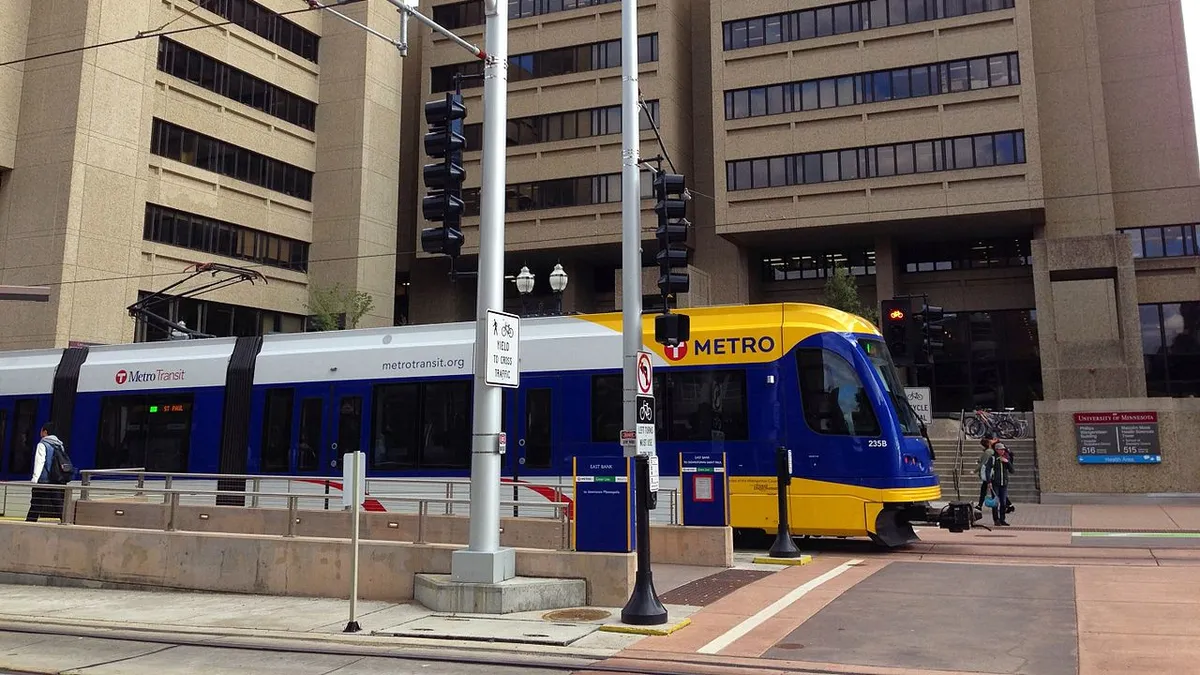Dive Brief:
- Values increase dramatically when properties are located close to transit, according to a joint study from the American Public Transportation Association (APTA) and the National Association of Realtors (NAR). The impact is often thought to apply to residential properties but, importantly for CFOs looking to buy or build space to meet company needs, commercial properties are found to benefit, too.
- The associations found that residential properties within a half-mile of public transit options (heavy rail, light rail, commuter rail and bus rapid transit) had a 4%-24% higher median sale price between 2012 and 2016. Meanwhile, in four of the seven regions analyzed, commercial property values saw a median sales price per square foot increase by between 5%-42%. The report analyzed seven metropolitan regions: Boston; Eugene, OR; Hartford, CT; Los Angeles; Minneapolis-St. Paul; Phoenix; and Seattle.
- The report found that those who live near transit have dramatically lower transportation costs compared to those who live further away. In transit-oriented areas, each household on average saves between $2,500 and $4,400 each, with one in four households who live close to transit not owning a car.
Dive Insight:
Encouraging development near transit is not a new phenomenon in cities, but it has picked up steam in recent years as city leaders look to invest in public transit, drive down congestion and fight the effects of climate change. Los Angeles County in August adopted an ambitious climate and sustainability plan with more than 150 strategies on fighting global warming, including more transit-oriented development.
The report plays up the effects of having developments located close to transit, including the ability for people to access more jobs and destinations, and that it requires less space to be taken up by parking spaces for cars. On a conference call unveiling the report, APTA President and CEO Paul Skoutelas said those areas "thrive when residents have mobility options are close by."
But those behind the report say more must be done to encourage additional transit-oriented development. Charlie Oppler, first vice president of NAR, said during the conference call that cities should look to speed up and streamline permitting processes to encourage more developments close to transit.
"There are so many opportunities for developers to be involved in the cities and to take advantage of these savings on the commute, the jobs, the workforce, the increased prices," Oppler said. He noted that 10 years ago, some property values went up due to the "Starbucks effect" of being located close to favored neighborhood amenities, but now transit is a key factor in driving up value.
Businesses appear to be taking more notice of the importance of locating close to transit. Amazon's decision on where to locate its second headquarters (HQ2) was driven in large part by a desire for access to public transportation, and the rejected cities were forced to have hard conversations about their own transport offerings.
Skoutelas said that "high-level example of just how important public transit is" is spreading, with companies including State Farm putting discussions around transit "at the heart of their decision-making" when deciding where to locate new offices.
"There's a realization by a lot of the large corporations that you cannot have 30,000 people driving to work and finding a place to park them," Nuria Fernandez, APTA board chair and general manager of the Santa Clara Valley Transportation Authority, said during the call.













